Discover 35 hidden attractions, cool sights, and unusual things to do in Kobe (Japan). Don't miss out on these must-see attractions: Oji Zoo, Kobe Port Tower, and Kobe Sports Park Baseball Stadium. Also, be sure to include Nunobiki Falls in your itinerary.
Below, you can find the list of the most amazing places you should visit in Kobe (Hyōgo).
Table of Contents
Oji Zoo
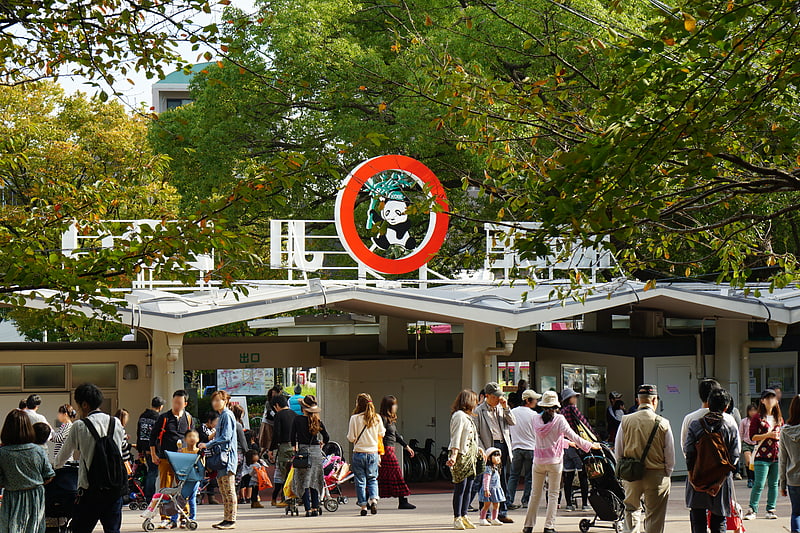
Kōbe Ōji Zoo, or simply Kobe Zoo or Ōji Zoo, is a municipal zoo in Kobe, Japan.[1]
Address: 3-1 Ojicho, Nada-ku, 657-0803 Kobe (灘区)
Kobe Port Tower
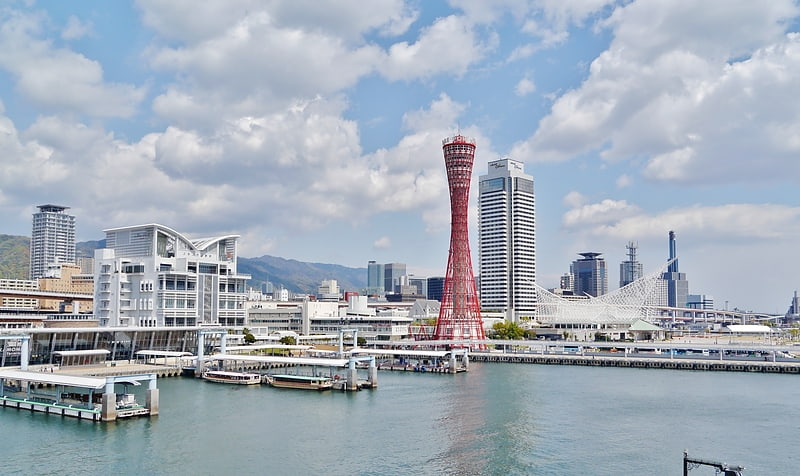
Also known as: 神戸ポートタワー
Tower offering panoramic city views. The Kobe Port Tower is a landmark in the port city of Kobe, Japan. The sightseeing tower was completed in 1963 and was temporarily closed from late 2009 to April 28, 2010 for renovation. It is located in the Central District, Kobe, Hyogo Prefecture, Japan.[2]
Address: 2-2 Hatoba-cho, Chuo-ku, 650-0042 Kobe (中央区)
Kobe Sports Park Baseball Stadium
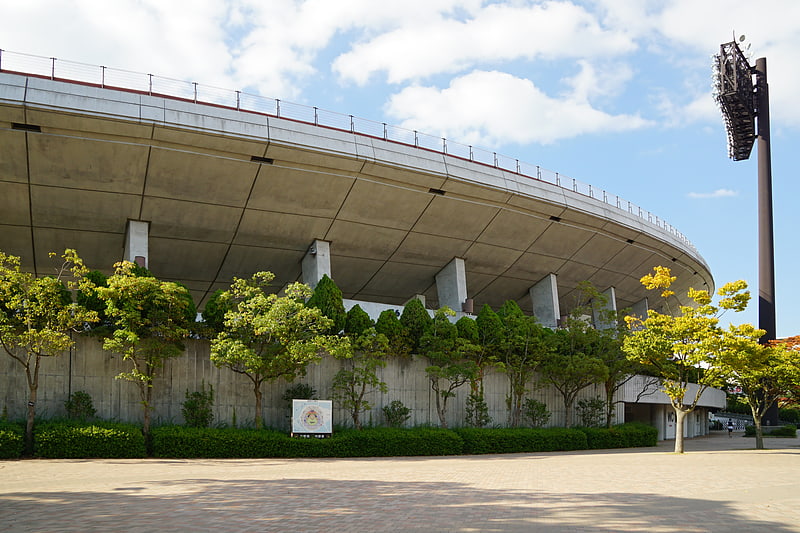
Also known as: 神戸総合運動公園野球場
Stadium in Kobe, Japan. Kobe Sports Park Baseball Stadium or officially Hotto Motto Field Kobe is a baseball park in Kobe Sports Park, Kobe, Japan. It is primarily used for baseball, and is one of two home fields for the Orix Buffaloes, the other being the Kyocera Dome Osaka. The stadium also occasionally hosts Hanshin Tigers when their home field of Koshien Stadium is unavailable.
The stadium's field is one of two ballparks in Japan to have an American-style baseball field: An all-grass outfield and infield, with dirt basepaths. It opened on March 6, 1988 and holds 35,000 people.[3]
Address: Midoridai, Suma-ku, 654-0163 Kobe (須磨区)
Nunobiki Falls
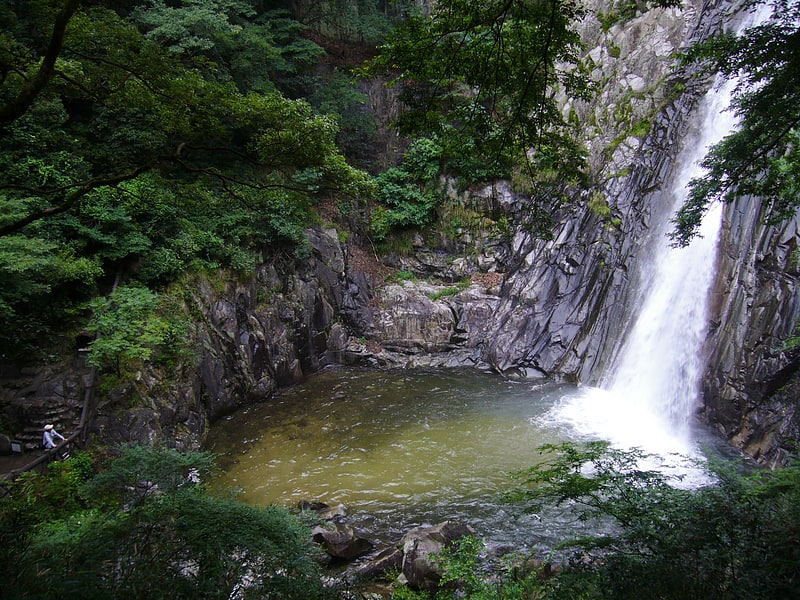
Also known as: 布引の滝
Well-known group of waterfalls. Nunobiki Falls is a set of waterfalls near downtown Kobe, Japan, with an important significance in Japanese literature and Japanese art. In Japan, Nunobiki is considered one of the greatest "divine falls" together with Kegon Falls and Nachi Falls.
Nunobiki waterfalls comprises four separate falls: Ontaki, Mentaki, Tsutsumigadaki, and Meotodaki.[4]
Kobe Animal Kingdom
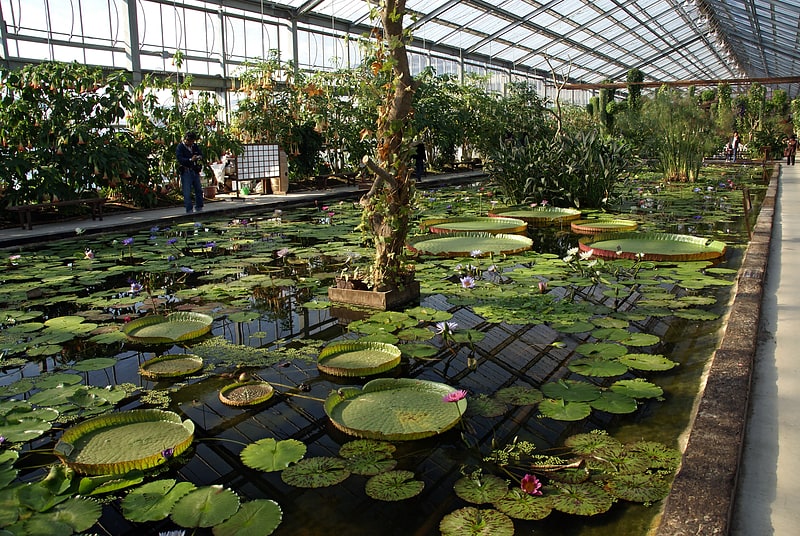
Also known as: 神戸どうぶつ王国
Zoo in Kobe, Japan. Kobe Animal Kingdom is an animal and flower park located on Port Island in Kobe, Japan. It is mainly located in and around a greenhouse. It was called Kobe Kachoen until 18 July 2014. It is one of several theme parks created by Japanese botanist and collector Kamo Mototeru, and was opened on 15 March 2006. This all-weather park is based on the concept of contact with birds and flowers. In the park, visitors are able to touch and feed birds.
On 20 November 2013, Kobe Kachoen went bankrupt. The management rights were acquired from Kobe Kachoen by the company Kobe Animal Kingdom in March 2014, and on 19 July 2014, the park was renamed Kobe Animal Kingdom.
Species of animals and flowers at the park include:
- Sheep
- Otters
- Horses
- Camels
- Pigs
- Capybara
- Penguins
- Deer
- Red panda
- Seals
- Owls
- Anatidae
- Phasianidae
- Toucans
- African penguin
- Begonia
- Fuchsia
- Nymphaea and Victoria amazonica
Address: 7-1-9 Minatojima Minamimachi, Chuo-ku, 650-0047 Kobe (中央区)
Moto-Sumiyoshi Shrine

Moto-Sumiyoshi Shrine is a Japanese Shinto shrine in Higashinada ward, Kobe. It is one of the biggest shrines in western Kobe. It is next to Sumiyoshi Station. There is documentary evidence that the shrine has existed since the 13th century.
Moto-Sumiyoshi Shrine holds a danjiri festival annually in May. Portable shrines are wheeled through neighborhoods around the shrine by teams of about 50 people.[6]
Kobe Anpanman Children's Museum & Mall
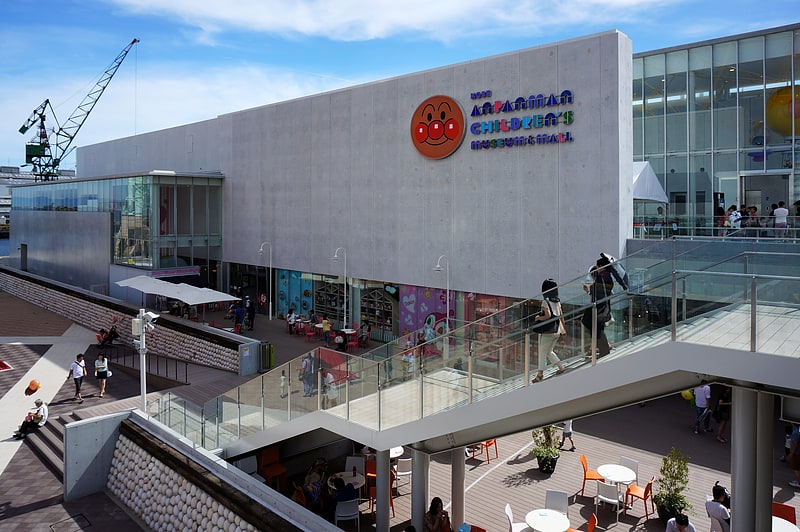
Also known as: 神戸アンパンマンこどもミュージアム&モール
The Kobe Anpanman Children's Museum & Mall is an interactive children's museum located in Kobe, Japan dedicated to Takashi Yanase's popular Anpanman franchise. It is one of three such complexes in the country, and also the newest, having been opened in 2013.[7]
Address: 1-6-2 Higashikawasakicho, Chuo-ku, 650-0044 Kobe (中央区)
Ikuta Shrine
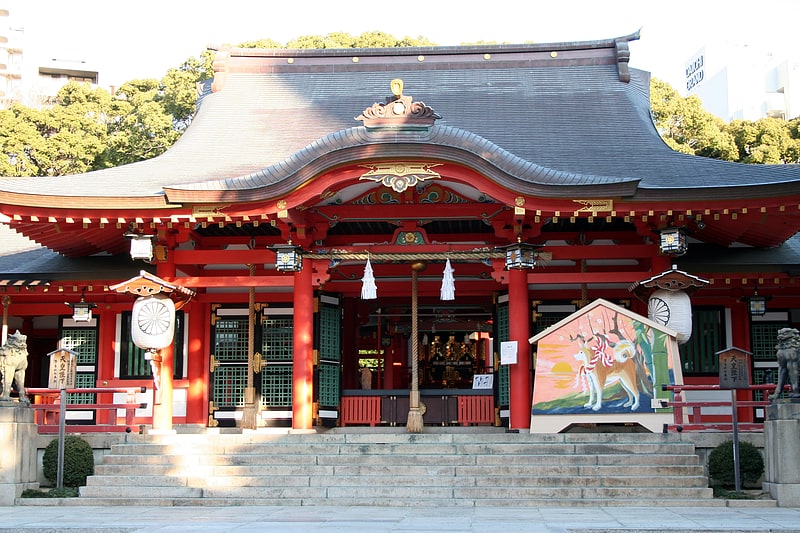
Also known as: 生田神社
One of Japan's oldest Shinto shrines. Ikuta Shrine is a Shinto shrine in the Chūō Ward of Kobe, Japan, and is possibly among the oldest shrines in the country.[8]
Address: Sannomiya / Motomachi, 650-0011 Kobe (中央区)
Noevir Stadium Kobe
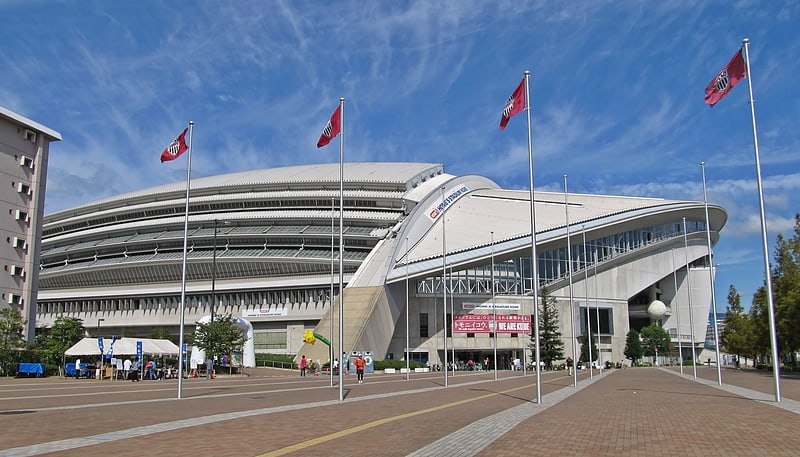
Also known as: 御崎公園球技場
Stadium in Kobe, Japan. The Kobe City Misaki Park Stadium, also known as The Noevir Stadium Kobe, is a football stadium in Misaki Park, Hyogo-ku, Kobe, Japan. The stadium has a capacity of 30,132. This stadium, which features a retractable roof, is the home ground of J1 League club Vissel Kobe and the rugby union Top League team Kobelco Steelers.
In 1970, Kobe Central Football Stadium (神戸市立中央競技場) was opened at the site of the Kobe Keirin Track. It was the first football stadium in Japan to be able to host games at night following the installation of night lighting.[9]
Sōraku-en
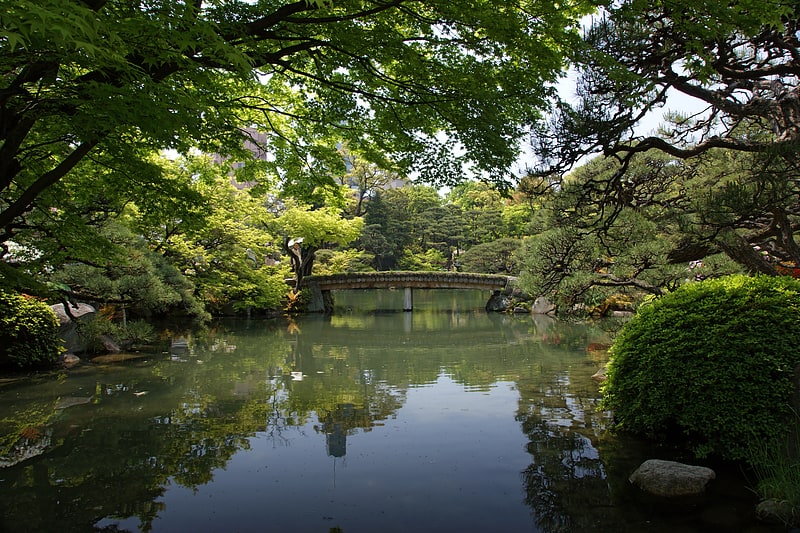
Also known as: 相楽園
Garden in Kobe, Japan. The gardens of Sōraku-en are in Chūō-ku, Kobe, Japan. Formerly attached to the Taishō-era residence of Kodera Yasujirō, ownership passed to the city of Kobe in 1941. Since then they have been open to the public. Most of the former residence was destroyed in the Pacific War; the stables of 1907 survived and have been designated an Important Cultural Property.
It is one of the few historical Japanese gardens that exists within Kobe city. It adopts a "chisen kaiyu shiki (池泉回遊式)”, style which is a style of garden that features a path around a pond. The giant camphor tree standing inside the garden is considered one of the most iconic elements of the site. This tree is known to have been there before the original residence of Kodera Yasujirō was built.
In the gardens are the former Hassam Residence, built by the English architect Alexander Nelson Hansell in 1902 and relocated to its current site in 1963 (ICP); an Edo-period building shaped like a boathouse, dating from 1682-1704 (ICP); a tea house; and a stroll garden.
In 2006 Sōraku-en was registered as a Place of Scenic Beauty. The gardens take their name from a passage of the I Ching.[10]
Address: 5-3-1 Nakayamatedori, Chuo-ku, 650-0004 Chuo (中央区)
Hyogo Prefectural Museum of Art

Also known as: 兵庫県立美術館
Japanese and Western art museum. The Hyōgo Prefectural Museum of Art is a purpose built municipal art gallery in Nada-ku, Kobe, Hyōgo Prefecture, Japan. It was opened in 2002.
The major collections of the museum are foreign and Japanese sculptures, foreign and Japanese prints, Western-style and Japanese-style paintings associated with Hyogo Prefecture, Japanese greatworks in modern era, and contemporary art.
This museum has memorial rooms of Ryōhei Koiso and Kanayama Heizō. They are two of the greatest contemporary artists in Japan.
The building of the museum is a modern, concrete construction by famed architect Tadao Ando.[11]
Address: 1 Chome-1-1 Wakinohamakaigandōri, Chūō-ku, Kōbe-shi, 651-0073 Kobe (中央区)
Mount Rokkō
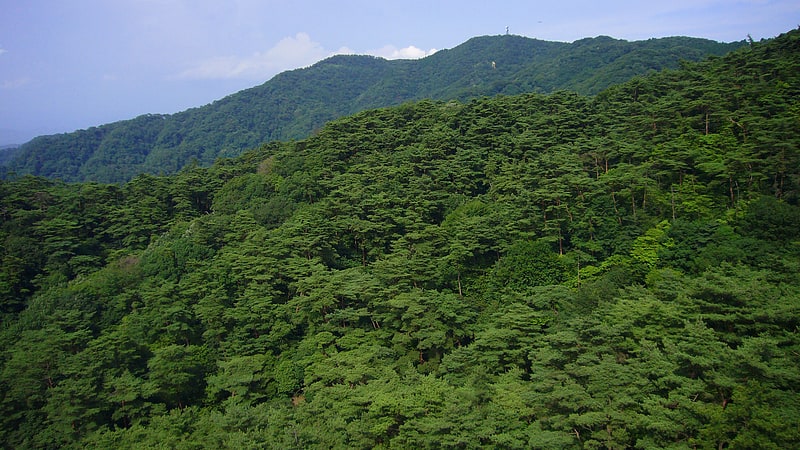
Also known as: 六甲山
Mountain in Japan. Mount Rokkō is the name of a range of mountains in southeastern Hyōgo Prefecture, Japan.[12]
Kobe Maritime Museum
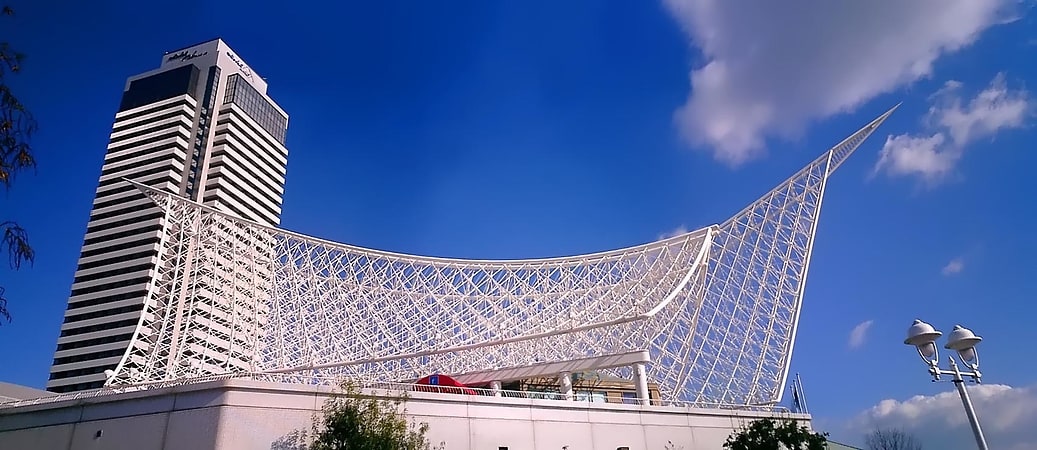
Also known as: 神戸海洋博物館
Museum. Kobe Maritime Museum is a museum in Kobe, Japan focusing on the history of Japanese shipping and Kobe harbor.
One of the exhibits is the Yamato 1.[13]
Address: 2-2 Hatobacho, Chuo-ku, 650-0042 Chuo (中央区)
Kobe Mosque
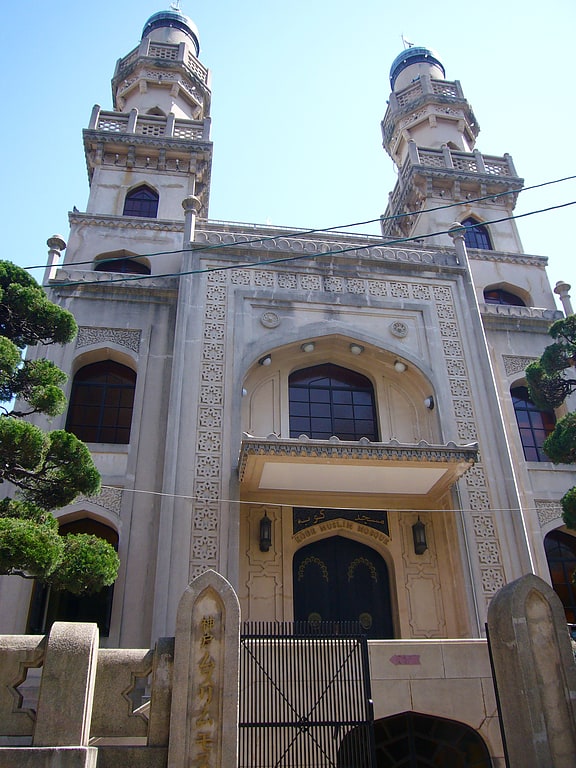
Also known as: 神戸モスク
20th-century mosque, the first in Japan. Kobe Masjid, also known as Kobe Muslim Masjid, was founded in October, 1935 in Kobe and is Japan's first masjid. Its construction was funded by donations collected by the Islamic Committee of Kobe from 1928 until its opening in 1935. The mosque was confiscated by the Imperial Japanese Navy in 1943. However, it continues to function as mosque today. It is located in the Kitano-cho foreign district of Kobe. The mosque survived the air raids that laid waste to most of Kobe's urban districts in 1945 and was able to endure through the Great Hanshin earthquake in 1995. The mosque is located in one of Kobe's best-known tourist areas, which features many old western style buildings.
The mosque was built in traditional Indo-Islamic style by the Czech architect Jan Josef Švagr (1885–1969), the architect of a number of Western religious buildings throughout Japan. In recent years There are more than 110 mosques in Japan.[14]
Address: 2-25-14 Nakayamatedori, Chuo-ku, 650-0004 Kobe (中央区)
Minatogawa Shrine
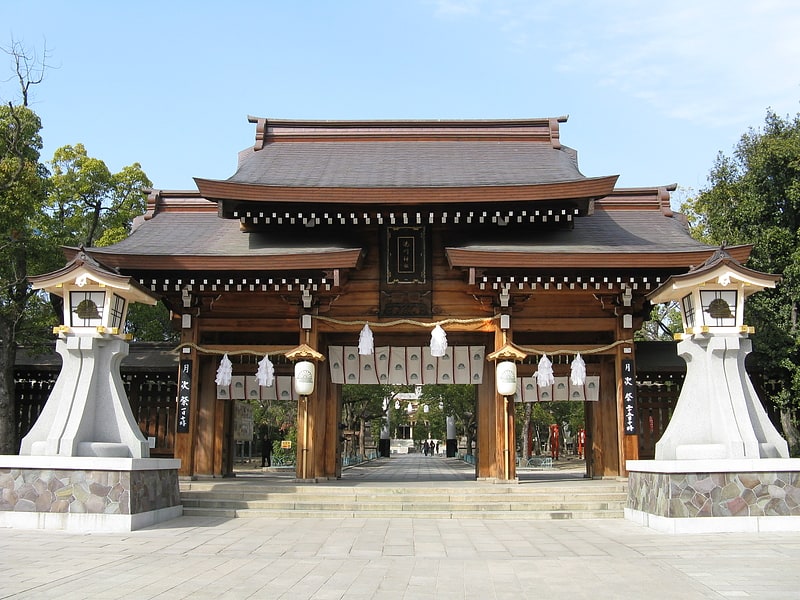
Also known as: 湊川神社
Tranquil post-war Shinto shrine. Minatogawa Shrine is a Shinto shrine in Chūō-ku, Kobe, Japan, roughly on the site of the Battle of Minatogawa established in 1872.
The enshrined kami is the spirit of Masashige Kusunoki, a military commander. It is one of the Fifteen Shrines of the Kenmu Restoration.[15]
Address: 3-1-1 Tamondori, 650-0015 Chuo (中央区)
Suma Rikyu Park
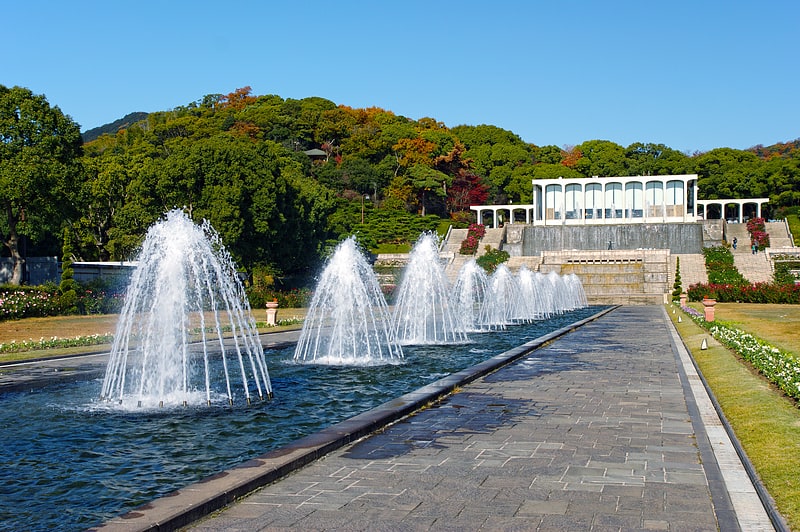
Also known as: 須磨離宮公園
Park with flowers and fountains . The Suma Rikyu Park is a park with botanical garden located at Higashi Suma 1-1, Suma-ku, Kobe, Hyōgo, Japan. It is open daily except Thursdays; an admission fee is charged.
The park was created in 1967 on the general model of the Palace of Versailles park. It includes about 230 types of trees, substantial gardens of iris (40 varieties), rose (160 varieties), and camellia, as well as a botanical garden with greenhouse, collections of hydrangea, peony, and cherry trees (20 varieties), a Japanese garden, tea ceremony rooms, a drive lined with maple trees, etc. The park also includes fountains, a picnic area and restaurant, playground, and an athletic pathway with 28 stations.[16]
Address: 1-1 Higashisuma, Suma-ku, 654-0018 Kobe (須磨区)
Takenaka Carpentry Tools Museum
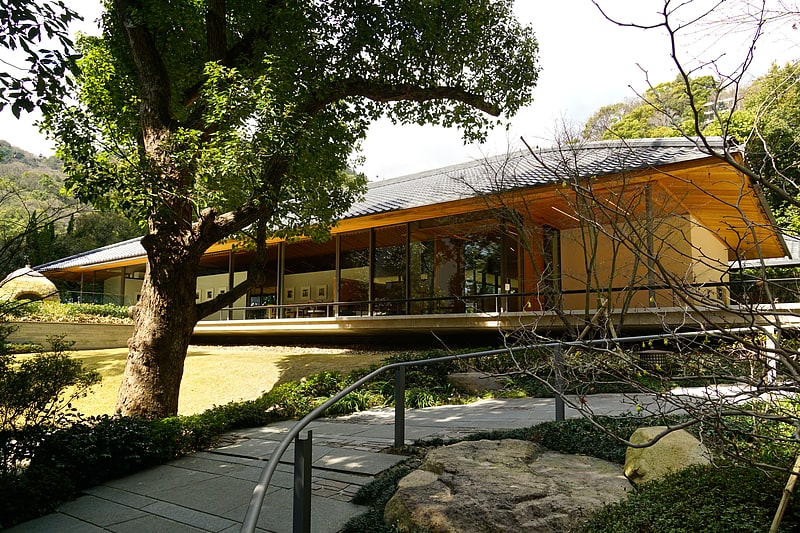
Also known as: 竹中大工道具館
Museum in Kobe, Japan. The Takenaka Carpentry Tools Museum is a museum of carpentry tools in Kobe, Japan. The museum was opened in 1984 with the objective of collecting and conserving ancient tools as an example of Japanese cultural heritage, in order to pass them on to the next generation through research and exhibitions.
More than 30,500 pieces of materials have been collected so far, and the museum has held exhibitions, lectures, seminars, classes outside of the museum, and workshops on the people who make use of the tools, as well as the resulting architecture and the culture of wood that surrounds it.
The project was designed and constructed by the Takenaka Corporation in collaboration with skilled woodworkers.[17]
Address: 7 Chome-5-1 Kumochichō, Chūō-ku, Kōbe-shi, 651-0056 Kobe (中央区)
Meriken Park
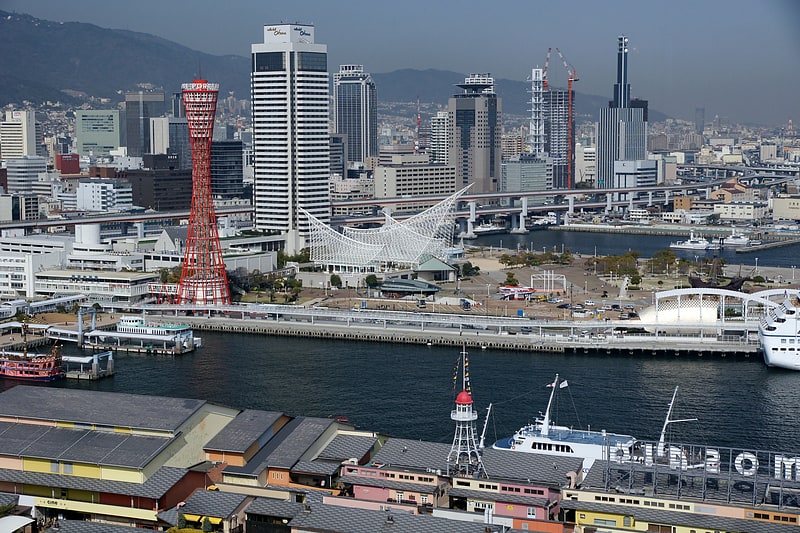
Also known as: メリケンパーク
Waterfront hub housing city landmarks. Meriken Park is a waterfront park located in the port city of Kobe, Hyōgo Prefecture, Japan. The park features the Kobe Port Tower, Kobe Maritime Museum, and a memorial to victims of the Great Hanshin earthquake. The name of the park comes from the word "American," which was commonly translated as "Meriken" during the Meiji era. Meriken Park is also the location of the Hotel Okura Kobe and Kobe Meriken Park Oriental Hotel.[18]
Address: Hatobacho, Chuo-ku, Kobe (中央区)
Higashinada-ku
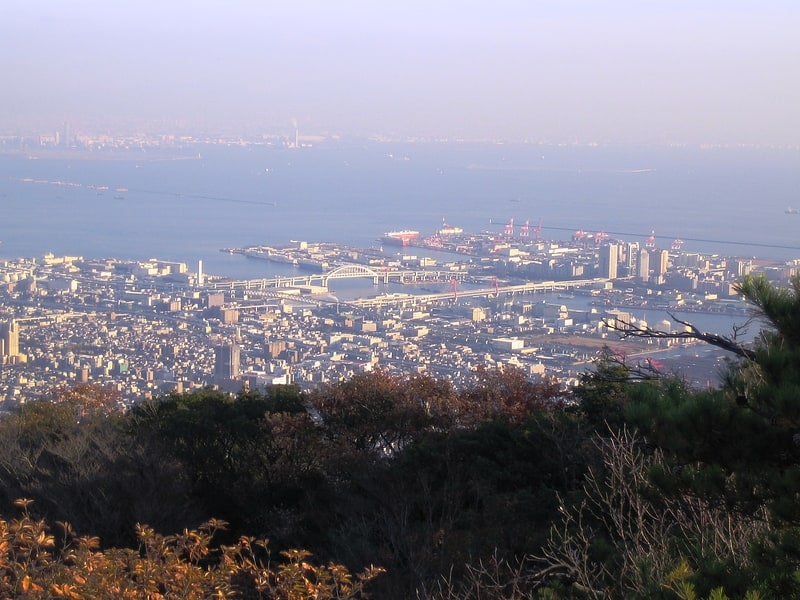
Also known as: 東灘区
Higashinada is one of 9 wards of Kobe, Japan. It has an area of 30.36 km², and a population of 212,111. South of the Hanshin Main Line, it is also home to some notable sake brewing areas, including Uozaki and Mikage.[19]
Hakutsuru Fine Art Museum

Also known as: 白鶴美術館
Museum in Kobe, Japan. Hakutsuru Fine Art Museum opened in 1934 in Kobe, Hyōgo Prefecture, Japan to display the collection of Kanō Jihei, seventh head of the Hakutsu Sake Brewing Company. As such it was one of the first private museums in Japan. The collection of some 1450 items includes two National Treasures and twenty-two Important Cultural Properties.[20]
Address: Kobe, 6-1-1 Sumiyoshi Yamate, Higashinada-ku, Kobe
Kobe City Museum of Literature
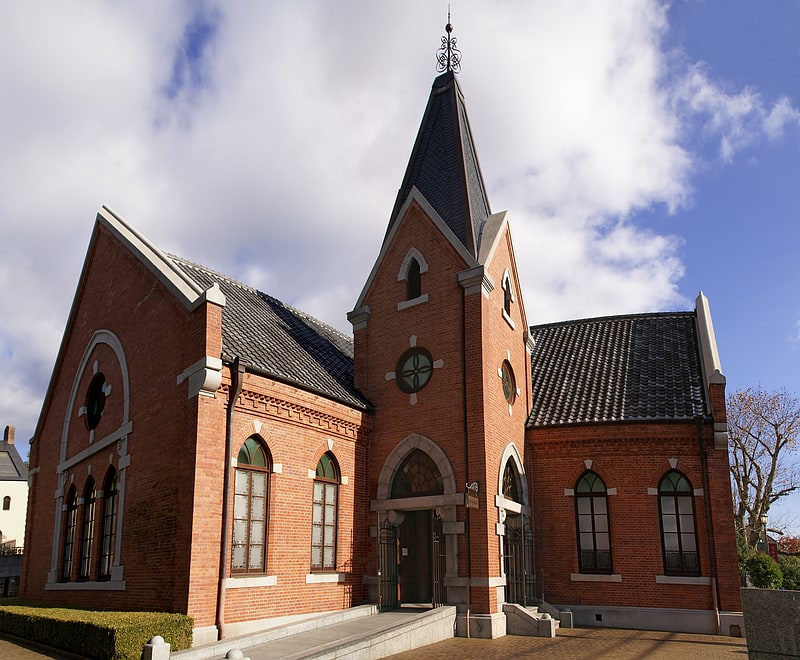
Also known as: 神戸文学館
Museum in Kobe, Japan. The Kobe City Museum of Literature is dedicated to the literary scene in Kobe, Hyōgo Prefecture, Japan in the Meiji, Taishō, Shōwa, and Heisei periods. The museum opened in 2006 in the former Branch Memorial Chapel of Kwansei Gakuin University, a Meiji period building largely funded by John Kerr Branch, a scion and financier from Richmond, Virginia.
It is next to Ōji Zoo and across the street from a contemporary art gallery dedicated to the illustrator Yokoo Tadanori.[21]
Address: 3 Chome-1-1-2 Ōjichō, Nada-ku, Kōbe-shi, 657-0838 Kobe (灘区)
Kobe City Museum
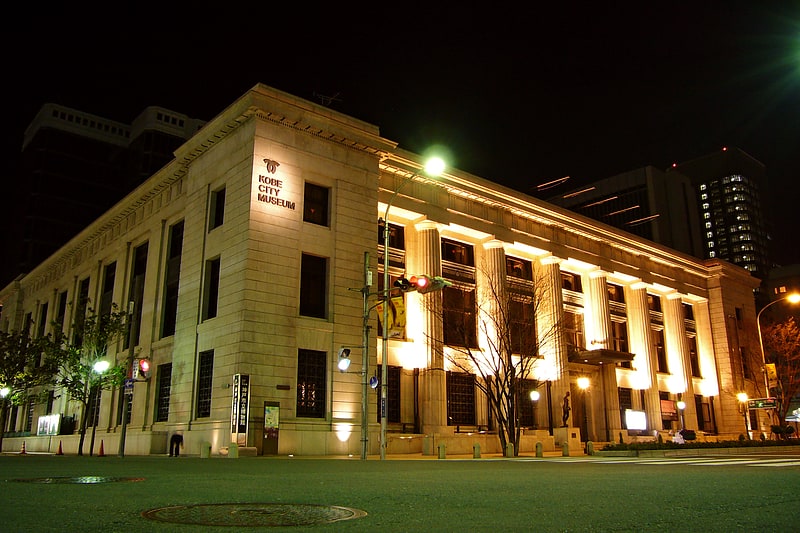
Also known as: 神戸市立博物館
Museum of Kobe city history and culture. The Kobe City Museum opened in Kobe, Japan in 1982. It is one of Japan's many museums which are supported by a municipality.
The museum resulted from the merger of the Municipal Archaeological Art Museum and Municipal Namban Art Museum. The museum is housed in a neoclassical building built in 1935: the former Kobe branch of the Yokohama Specie Bank. The collection of nearly thirty-nine thousand items comprises archaeological artifacts, works of art, old maps, and historical documents and artifacts relating to Kobe. It includes an important collection of Namban art (the former Hajime Ikenaga Collection), as well as a set of dōtaku and other items of the Yayoi period from excavations at Sakuragaoka that have been designated a National Treasure.[22]
Address: 24 Kyōmachi, Chūō-ku, Kōbe-shi, 650-0034 Kobe (中央区)
Kikuseidai
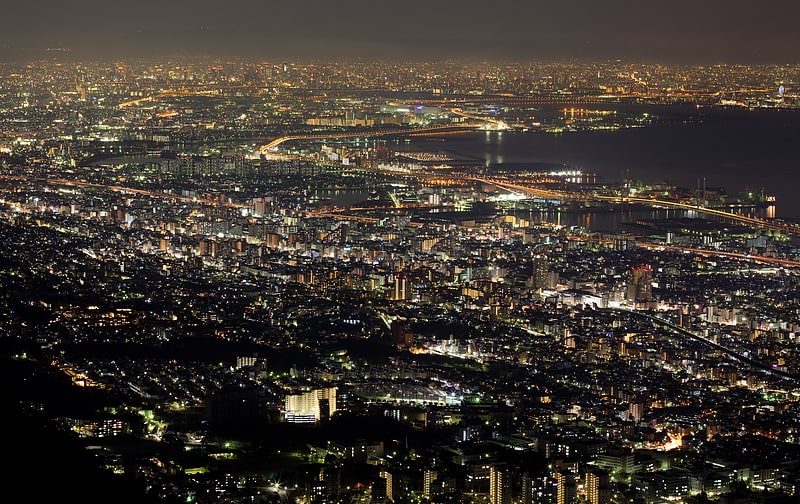
Also known as: 掬星台
Observation deck in Kobe, Japan. Kikuseidai is a view point and a park just aside of the top of Maya-san in Kobe, Japan. It has one of the Three Major Night Views of Japan called ten million dollar night views.[23]
Sumaura Ropeway
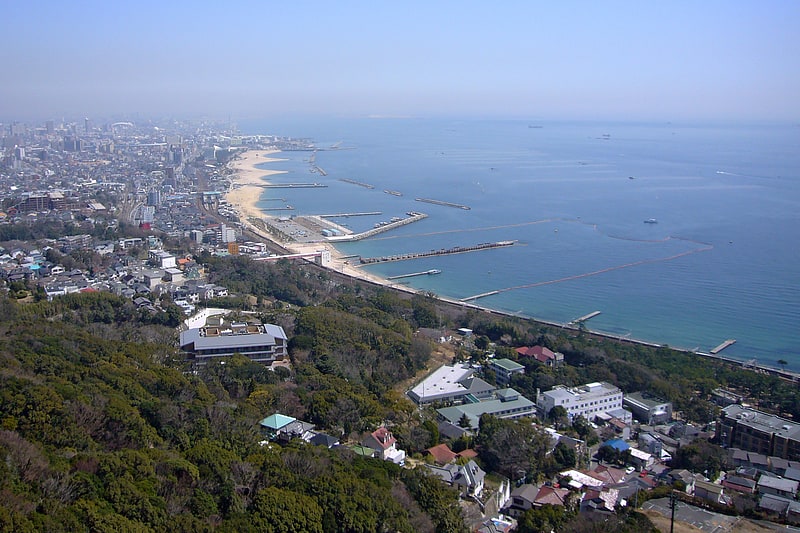
Also known as: 須磨浦ロープウェイ
The Sumaura Ropeway is Japanese aerial lift line in Kōbe, Hyōgo, operated by the Sanyō Electric Railway. Opened in 1957, the line climbs Mount Hachibuse of the Suma coast. At the summit, there is a transfer to the Carlator, a sort of escalator with baskets. Carlator is a portmanteau of "Car" and "escalator".[24]
Nunobiki Herb Garden
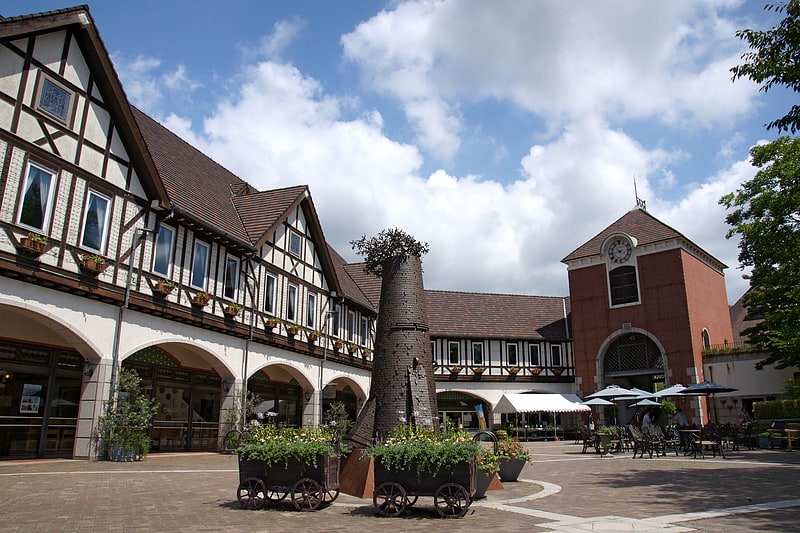
Also known as: 布引ハーブ園
Botanical garden with cafes . The Nunobiki Herb Garden is a herb garden located on Mount Rokkō above Kobe, Japan. It is open daily; an admission fee is charged.
The garden is accessed by Shin-Kobe Ropeway gondola lift from downtown Kobe. It features over 75,000 herbs (200 varieties), plus greenhouses, restaurant and cafe, museums, exhibits, and gift shops.
The garden was built in 1991.[25]
Address: 1-4-3 Kitanocho, Chuo-ku, 650-0002 Kobe (中央区)
Rokkō Alpine Botanical Garden
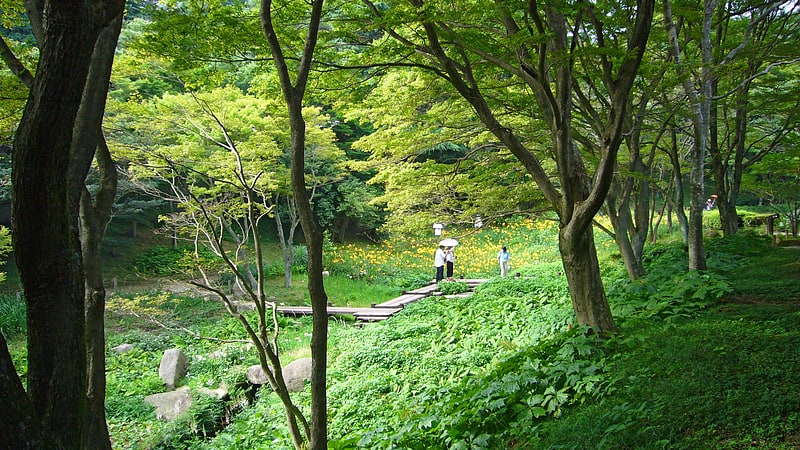
Also known as: 六甲高山植物園
Botanical garden in Kobe, Japan. The Rokkō Alpine Botanical Garden is a botanical garden located on Mount Rokkō, Kobe, Japan. It is open daily in the warmer months, except some Thursdays; an admission fee is charged.
The garden was established in 1933 at an altitude of 865 meters near the peak of Mount Rokkō. It currently contains about 1,500 kinds of alpine plants from Japan and the Himalayas, including dicentra, edelweiss, skunk cabbage, and native wild plants.[26]
Address: 4512-150 Rokkosancho, Nadaku, 657-0101 Kobe (灘区)
Rokko Yahata Shrine

Also known as: 六甲八幡神社
Shinto shrine in Kobe, Japan. Rokko Yahata Shrine is a Japanese Shinto shrine near Hankyu Rokko Station in Nada-ku, Kobe. It is one of the biggest shrines in western Kobe along with the Sumiyoshi Shrine. It holds events on New Year's Day, the yakujin festival, setsubun and Shichi-Go-San. The big red torii gate at the entrance to the shopping mall is very large. It is at least 110 years old.[27]
Address: 3-6-5, Yahatacho, Nada-Ku, Kobe (灘区)
Nōfuku-ji

Also known as: 能福寺
Temple in Kobe, Japan. Nōfuku-ji is a Buddhist temple that, from the legend, was founded in 805 by the monk Saichō, in Kita Sakasegawa, Hyōgo-ku, Kobe, Hyōgo Prefecture, Japan. Saichō placed a statue of Yakushi Nyorai of his own making in the temple hall and named the temple Nōfuku Gokoku Mitsu-ji.
This temple served as a branch temple of Kyoto's Shōren-in from the early Edo period to the beginning of the Meiji period.
The Shin-saigoku Pilgrimage (新西国三十三箇所観音霊場) (a Buddhist pilgrimage route in Japan) includes this temple as one of the stops.[28]
Address: 1-39 Kitasakasegawacho Hyogoku, 652-0837 Kobe (兵庫区)
Nagata Shrine
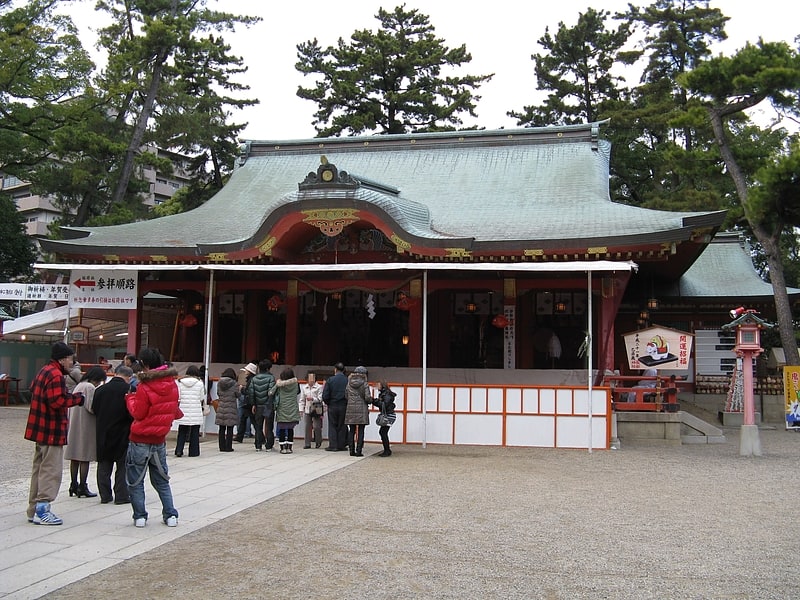
Also known as: 長田神社
Shinto shrine in Kobe, Japan. Nagata Shrine is a Shinto shrine in Nagata-ku, Kobe, Japan. At Nagata, Kotoshironushi-no-Okami is enshrined.
The shrine is associated with Amaterasu, who is said to have told Empress Jingū that a shrine was wanted at Nagata.[29]
Address: 3-1-1 Nagatacho, Nagata-ku, 653-0812 Kobe (長田区)
Wadamisaki Battery
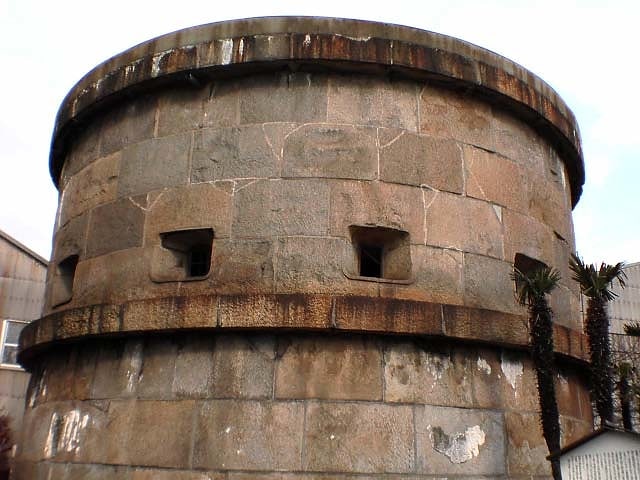
Also known as: 和田岬砲台
Historical landmark in Kobe, Japan. The Wadamisaki Battery is a coastal defense located in Hyōgo-ku, Kobe, Japan. It was built in 1864 by the Tokugawa shogunate in the Bakumatsu period, shortly before the end of the Shōgun's reign. One of many batteries built by the shogunate towards the end of its reign, the Wadamisaki Battery is the only one remaining from several that were built around Osaka Bay and is today listed in the Japanese government's register of historic sites.[30]
Tenjō-ji
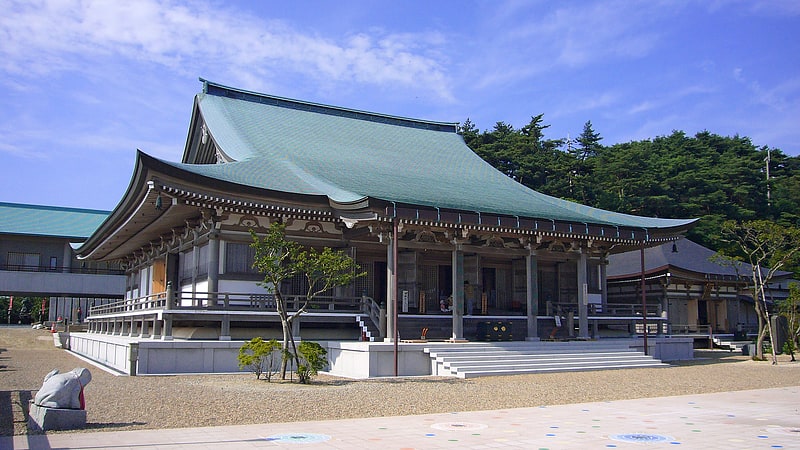
Also known as: とう利天上寺
Temple in Kobe, Japan. Tōri Tenjō-ji, officially Mayazan Tenjō-ji or Mayazan Tenjō-ji, is a Shingon Buddhist temple in eastern Kobe, Hyōgo Prefecture, Japan. The temple is located on Mount Maya in the Nada ward of Kobe.[31]
Address: 2-12 Mayasancho, Nada-ku, 657-0105 Nada (灘区)
Rokkosan Pasture
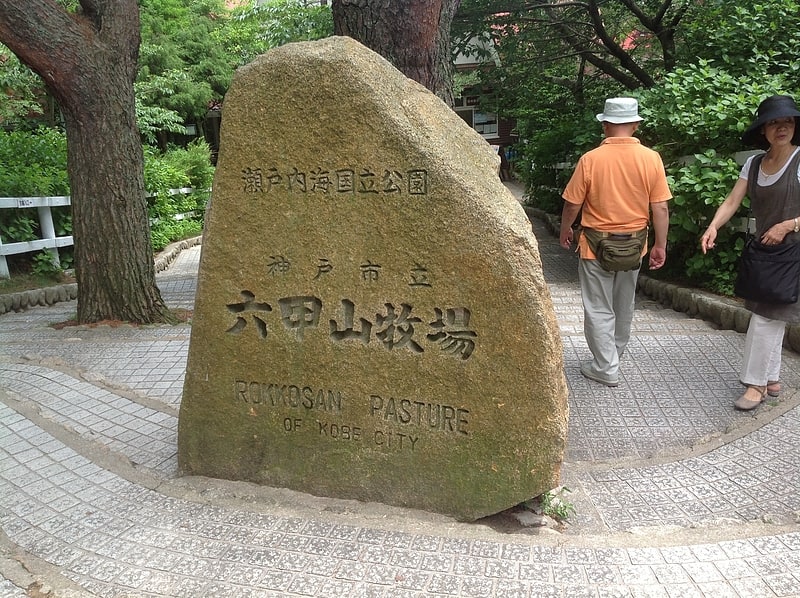
Also known as: 神戸市立六甲山牧場
Pasture in Japan. Rokkosan Pasture is a public pasture farm situated in Mount Rokkō, Kobe, Japan.[32]
Address: 1-1 Rokkosancho, Nada-ku, 667-0101 Kobe (灘区)
Kobe Municipal Arboretum
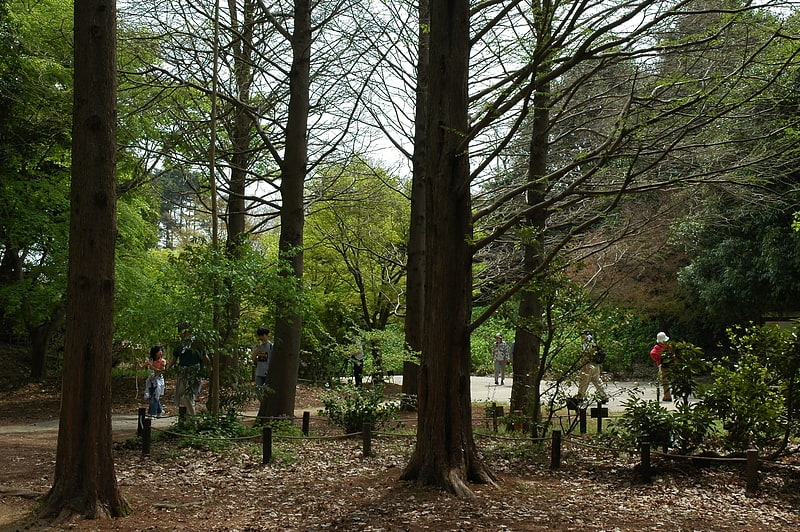
Also known as: 神戸市立森林植物園
Botanical garden in Kobe, Japan. The Kobe Municipal Arboretum, also known as the Kobe City Forest Botanical Garden, is a 142.6-hectare botanical garden and arboretum located near Mount Maya at 4-1 Nakaichiri-yama, Shimotanigami, Yamada-cho, Kita-ku, Kobe, Japan. It is operated by the city and open daily except Wednesdays; an admission fee is charged.
The arboretum was established in 1940 and now contains approximately 1,200 kinds of trees and shrubs from Japan as well as other parts of Asia, Australasia, Europe, and North America, with good collections of cherry trees, conifers, hydrangea, and rhododendrons.[33]
Maya Ropeway
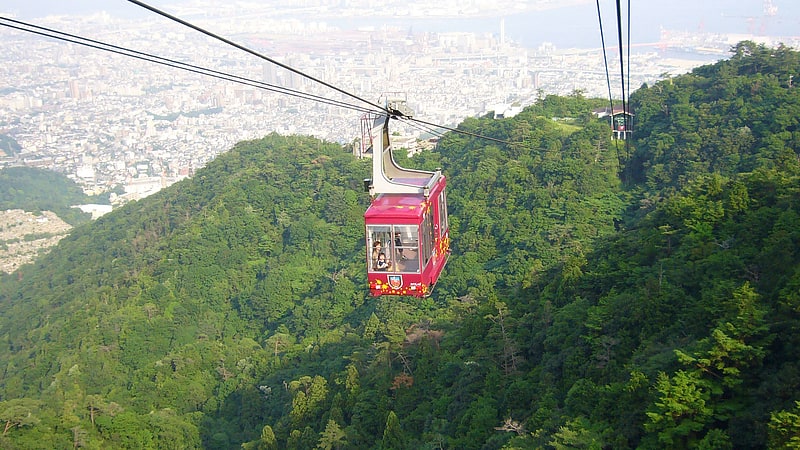
Also known as: 摩耶ロープウェー
The Maya Ropeway is Japanese aerial lift line in Kōbe, Hyōgo, operated by Kōbe City Urban Development. Together with Maya Cablecar, the line has an official nickname Maya View Line Yume-Sanpo. Opened in 1955, the line climbs Mount Maya, with a scenic view of the city known as Kikuseidai.[34]
Address: 2-2 Mayasancho, 657-0105 Nada (灘区)
An'yō-in
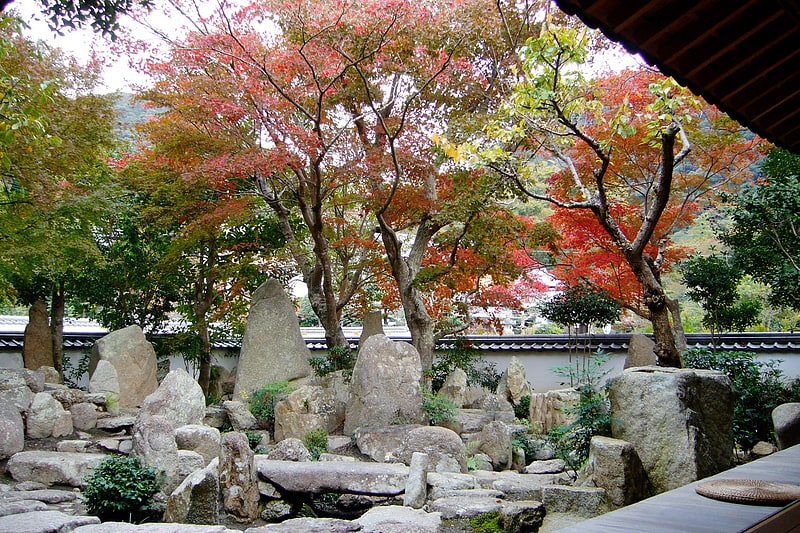
Also known as: 太山寺安養院庭園
Temple in Kobe, Japan. Taisan-ji An'yō-in is a temple of the Tendai sect in Kobe, Hyōgo Prefecture, Japan.
It was created as a tatchu temple (branch) in Taisan-ji.
An'yō-in's karesansui completed in Azuchi–Momoyama period is a national Place of Scenic Beauty.[35]